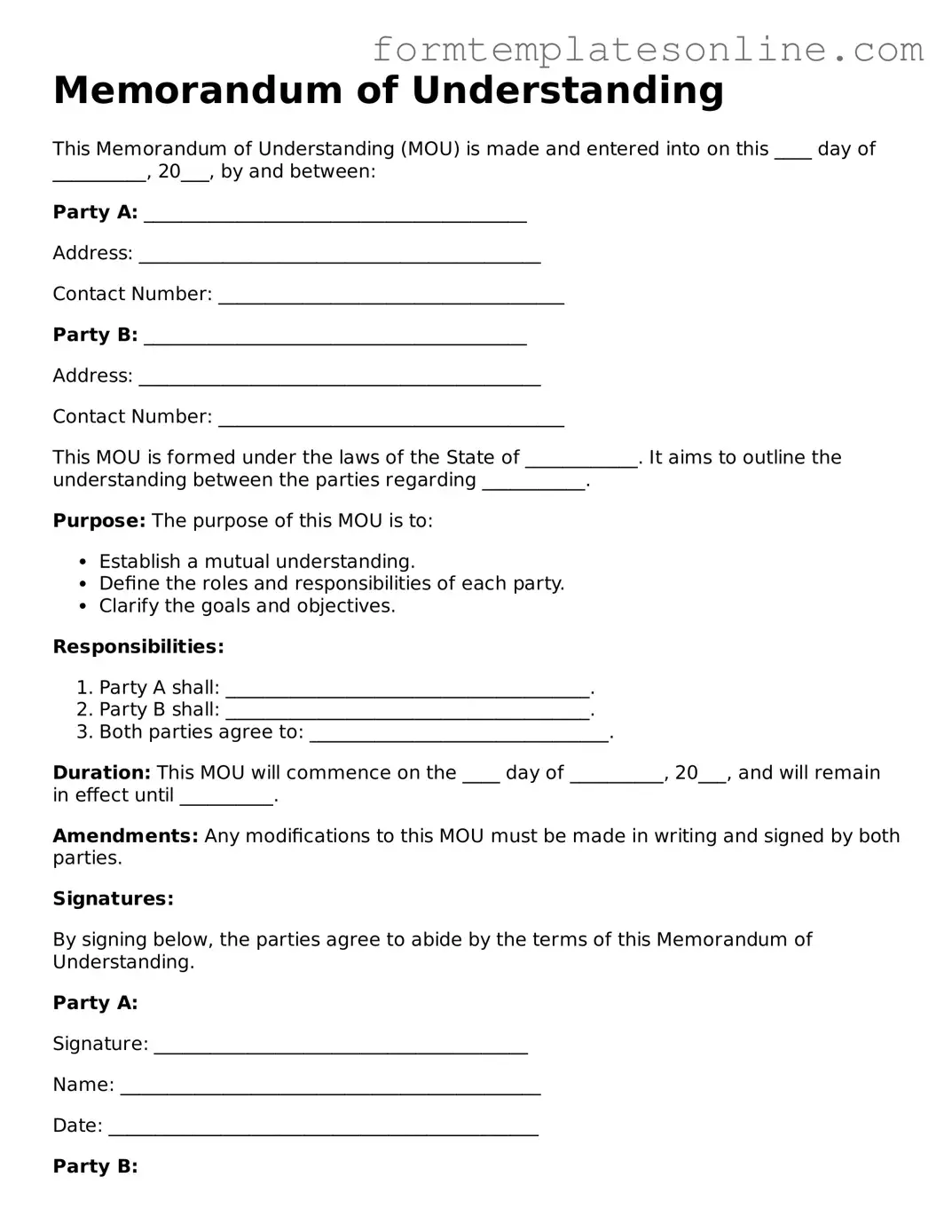What is a Memorandum of Understanding (MOU)?
A Memorandum of Understanding, or MOU, is a formal agreement between two or more parties. It outlines the intentions and expectations of each party regarding a specific project or collaboration. While it is not legally binding like a contract, an MOU serves as a useful tool for clarifying roles, responsibilities, and goals. It helps ensure that all parties are on the same page before moving forward.
What are the key components of an MOU?
An MOU typically includes several essential elements: the purpose of the agreement, the parties involved, the scope of the collaboration, specific responsibilities of each party, timelines, and any financial arrangements. Additionally, it may outline how disputes will be resolved and the process for making amendments to the agreement. Each of these components helps to create a clear understanding between the parties.
Is an MOU legally binding?
Generally, an MOU is not considered legally binding. It expresses the intentions of the parties involved but does not create enforceable obligations like a contract would. However, certain terms within an MOU could be binding if they meet the legal requirements for a contract. It’s important for parties to clearly state their intentions regarding the binding nature of the document.
When should I use an MOU?
An MOU is useful in various situations, such as when two organizations want to collaborate on a project, when parties need to outline expectations before entering into a formal contract, or when establishing partnerships. It can also be beneficial in academic, governmental, and non-profit settings. If clarity and mutual understanding are essential, an MOU can be a valuable tool.
How do I create an MOU?
Creating an MOU involves several steps. First, identify the parties involved and the purpose of the agreement. Next, outline the specific terms, including roles and responsibilities. It's helpful to draft the document in clear, concise language to avoid misunderstandings. Once the draft is complete, share it with all parties for review and feedback. Finally, all parties should sign the MOU to indicate their agreement.
Can an MOU be modified after it is signed?
Yes, an MOU can be modified after it is signed. If the circumstances change or if parties wish to adjust certain terms, they can do so by creating an amendment. This amendment should be documented in writing and signed by all parties involved. It’s important to follow the procedure outlined in the original MOU regarding modifications to ensure clarity and mutual agreement.
What happens if one party does not fulfill their obligations under an MOU?
Since an MOU is generally not legally binding, there may be limited recourse if one party does not fulfill their obligations. However, the parties may choose to address the issue through open communication or negotiation. If the situation escalates, it may lead to a more formal agreement or even legal action, depending on the specific terms outlined in the MOU.
How long does an MOU last?
The duration of an MOU can vary based on the agreement of the parties involved. Some MOUs specify a particular timeframe, while others may remain in effect until the completion of a project or until one party decides to terminate it. It’s essential to include a clear expiration date or conditions for termination within the MOU to avoid confusion.
Are there any alternatives to an MOU?
Yes, there are alternatives to an MOU. If a legally binding agreement is necessary, parties might consider drafting a formal contract instead. Other options include letters of intent or partnership agreements, which can also outline intentions and expectations but may carry different legal implications. The choice of document depends on the nature of the relationship and the level of commitment required.
